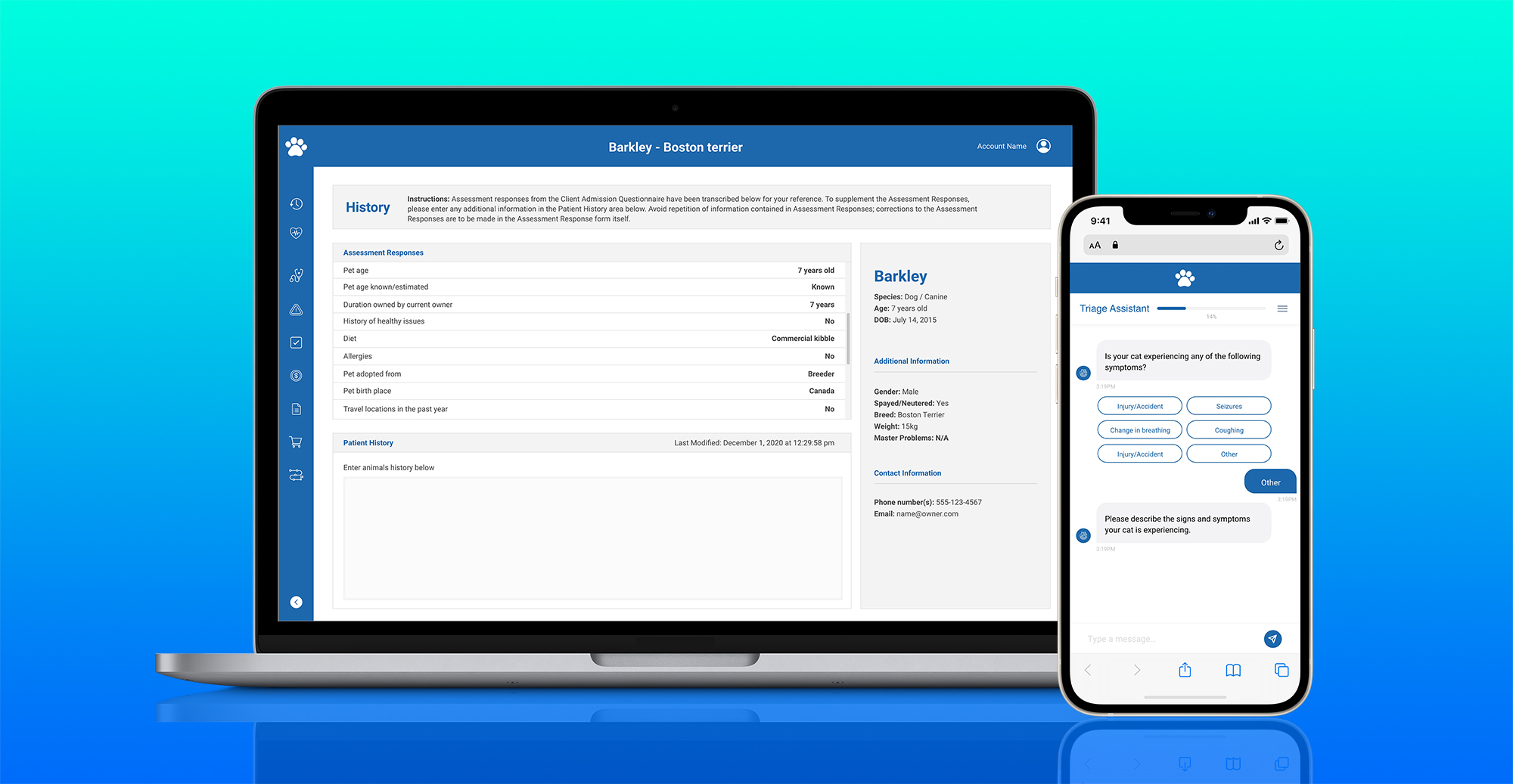Transforming the patient journey
With the new patient management platform, users — particularly those in animal hospitals — can better manage how resources and staff are allocated across departments. “We estimate that within the emergency department where we first deployed the solution, we’re going to save them 10% of their human resources costs in the first year,” observes our client.
In particular, the emergency department will be able to better focus highly skilled technicians and veterinarians on work that only they can do, while more administrative or common tasks can be offloaded to other personnel.
“And because of the workflow methodology of the clinician dashboard,” Woodrow continues, “we’ve removed the duplication of efforts related to clinical notes and intake interviews. We’re reducing wait times during triage because now there is a more direct line between examination and administration and diagnosis. On average we’ve cut the time to complete the diagnostic process and document it by a minimum of 25%.”
Further, with diagnostic models in place, clinical staff can make better informed decisions regarding patient care. Or as Woodrow expresses it, “We are providing them with up-to-date and objective information that will help to personalize treatment and lead to better healthcare outcomes for the patient.”
Alongside these care improvements, animal clinics and hospitals will be able to use the analytics capabilities of the solution to mine through all manner of data — caseloads, care efficacy rates, diagnostic machine usage, test types, etc. — to determine the return on investment (ROI) of equipment, adherence to protocols and overall patient outcomes, ultimately driving greater site efficiency and profitability.
Woodrow concludes, adding: “Without a future-proofed, scalable entity like IBM, this project would not have been able to succeed. And regarding KPI Digital — being a gold partner of IBM was probably the most confidence-leading measure for me. KPI was knowledgeable around data, analytics and AI, which is exactly what we needed.”

